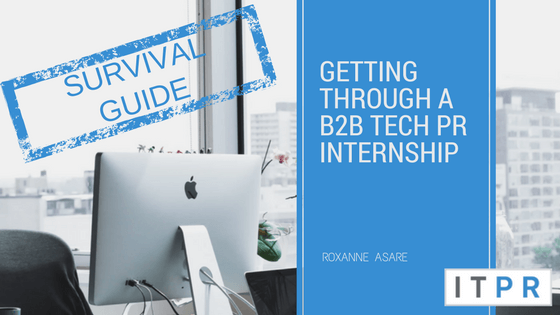How to create relevant PR content
About a quarter of PR pitches received by journalists are actually relevant to their audience or publication, according to 68% of journalists. Think...
3 min read
 Jon Brown
Updated on July 7, 2022
Jon Brown
Updated on July 7, 2022
![Top tips for press release writing [& free press release writing guide]](https://www.itpr.co.uk/hubfs/top%20tips%20to%20brief%20to%20your%20consultant%20compressed.jpg)
The press release still remains one of the most effective ways of getting your story in front of a journalist and into a publication.
While some have dismissed press releases as out-of-date or ineffective, much of the criticism is actually aimed at the content of many press releases, rather than the use of a press release as a tool.
Writing an effective press release might seem daunting if you’ve never done it before or if you don’t have a PR agency to lean on for help.
So we're providing some top tips for effective press release writing to get your story into the news.
Nailing the headline of your press release is critical (I’ll repeat that, critical) to getting your story published. Not only is the headline the first thing a journalist will see in your subject line, it is also what the journalist is relying on to entice people to read the story when they publish it.
Keep your headline short and snappy. Tease the story (don’t give it away) and don’t be boring.
While a news story might vary on topic, length and style any good story has five key components – the essential “five Ws”.
· Who – Who is your story about?
· What – What is your story about?
· When – When did the event in your story happen? (Or when will it happen)
· Where – Where did the event in your story happen? (Or where will it happen)
· Why – Why is the thing in your story happening? And, more importantly, why should anyone care?
You should make sure that your press release covers every one of these in the opening two paragraphs because if you miss one, chances are your story has a hole in it and you reduce the chance of getting it published.
A journalist might be willing to edit the structure of your story to make it fit their editorial guidelines, but if you leave out critical information, they’ll never use it.
One tip is to write “who, what, when, where, why” at the top of the page as a reminder of the key details to include.
News writing isn’t the same as creative and academic writing. The challenge isn’t to get your reader to make it all the way to the end. In reality if they make it past the first three or four paragraphs you’ll be lucky.
Don’t waste time trying to “set a scene” or tee up a witty one liner – just get to the point.
Ideally you should cover all of the five Ws in the first and second paragraph and then add context and colour further down.
Think of it this way: You’re walking to the pub to meet a friend when something happens outside. A minute later you’re in the pub explaining what happened.
You’re getting to the point.
The structure of a press release is all about ensuring you get all the important information of your story at the top of the article.
Information in a story loses its news value the further down the page it is and in print it is common practice to just cut a story from the bottom when struggling for space.
Don’t put the main point of the story half way down, chances are no-one will ever see it.
“High-quality learning environments are a necessary pre-condition for facilitation and enhancement of the ongoing learning process.”
“If there are any points on which you require explanation or further particulars we shall be glad to furnish additional details as may be required by telephone.”
If you can believe it those are real examples of writing that managed to get published.
B2B journalists are writing for educated audiences, but even they don’t want stories littered with jargon or undecipherable industry speak.
Using plain English helps get your message across more effectively.
A great quote can make or break even the most exciting news story.
It brings colour and context to the story and should add to what you’ve already written, rather than repeating what’s in the rest of the press release.
Be opinionated, that’s what journalists want and try to get across why this story matters – or should matter – to people.
Now that you know the basics of what makes great press release writing, download our free press release template which will give you more help on the structure and information to include in your story.

About a quarter of PR pitches received by journalists are actually relevant to their audience or publication, according to 68% of journalists. Think...

Link building is an SEO practice that most SEO experts avoid and hate doing. Most of SEO is highly technical and quantitative (data driven),...

Picture this, you’ve nearly finished university with ambitions of a grade that has you walking down the street with your head high and pep in your...